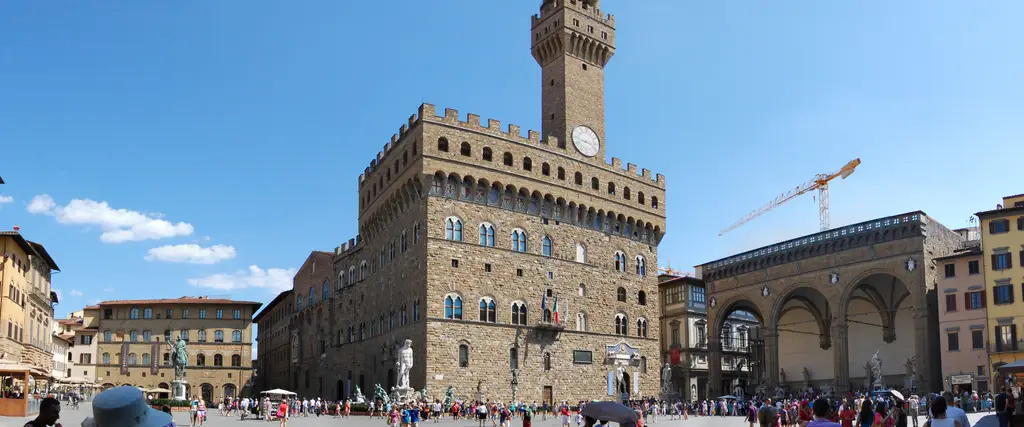
Piazza della Signoria
The square came into being along with the Palazzo Vecchio between the thirteenth and fourteenth century, establishing itself from the first as an area dedicated to the civic life of the city. Inside the Palace, seat of the Municipality of Florence you can also visit the Archaeological area (remains of the Roman Theatre) and climb the Tower (amazing panorama). In the course of the fourteenth century it took one more or less its present dimensions, as a result of the demolition of numerous private buildings and of two churches, and of the construction of the Loggia della Signoria on the west side and the Tribunale della Mercanzia (Commercial Court, nowadays Gucci Garden) on the north-east. Later developments were mostly connected with the sculptural decorations culminating, during the epoch of the Grand Duke, in the transformation of the Loggia della Signoria into a kind of open-air museum. The construction of the Uffizi (the most visited pianting gallery in Italy) connected with Palazzo Vecchio, in the mid sixteenth-century created a further prospect towards the river. The square was not immune from the nineteenth century renewal of the old city centre, within the course of which various Neo-Renaissance style buildings were introduced.
Piazza della Signoria has always represented the political centre of Florence becoming, over the years, the key place for many events that have strongly affected the history of the City and the entire world. In front of the XVI century Fountain of Neptune , one of the most beatiful fountains of Florence, there is a plaque on the ground marking the exact point where Fra Girolamo Savonarola and his fellow monks were burned on May 23rd 1498. This tragic episode is being commemorated every year with the traditional ceremony of the Fiorita.
In addition to the famous sculptures preserved inside the Loggia dei Lanzi (primarily Benvenuto Cellini's Perseus and Giambologna's Rape of the Sabine Women), among those in front of Palazzo Vecchio we highlight: Michelangelo's David (copy, original in the Galleria dell' Accademia), the Marzocco and Judith and Holofernes by Donatello (copies, originals respectively in the Bargello and inside Palazzo Vecchio). The square is dominated by the equestrian monument of Cosimo I de' Medici, Grand Duke of Tuscany, a work by Giambologna.
Comune di Firenze